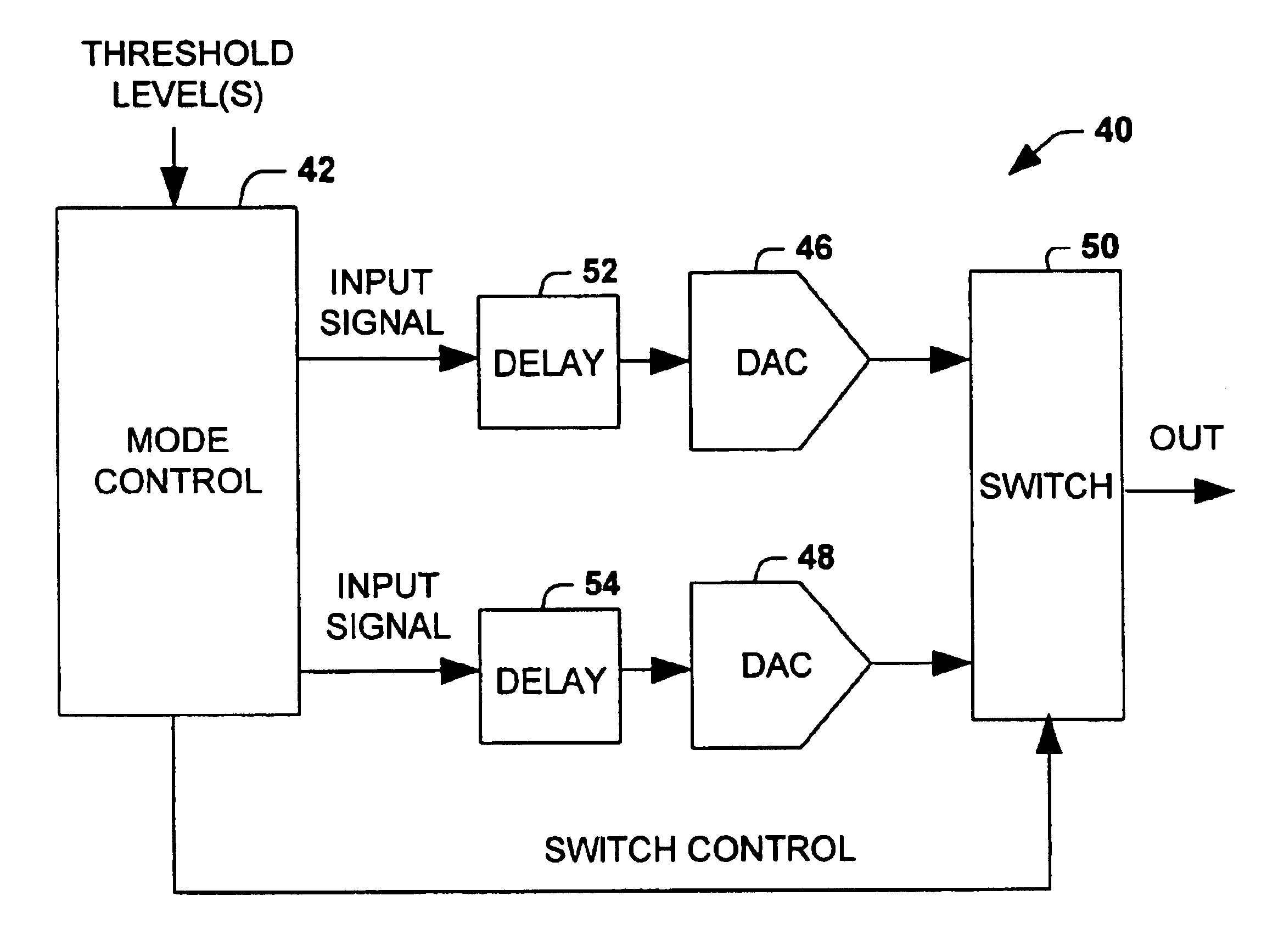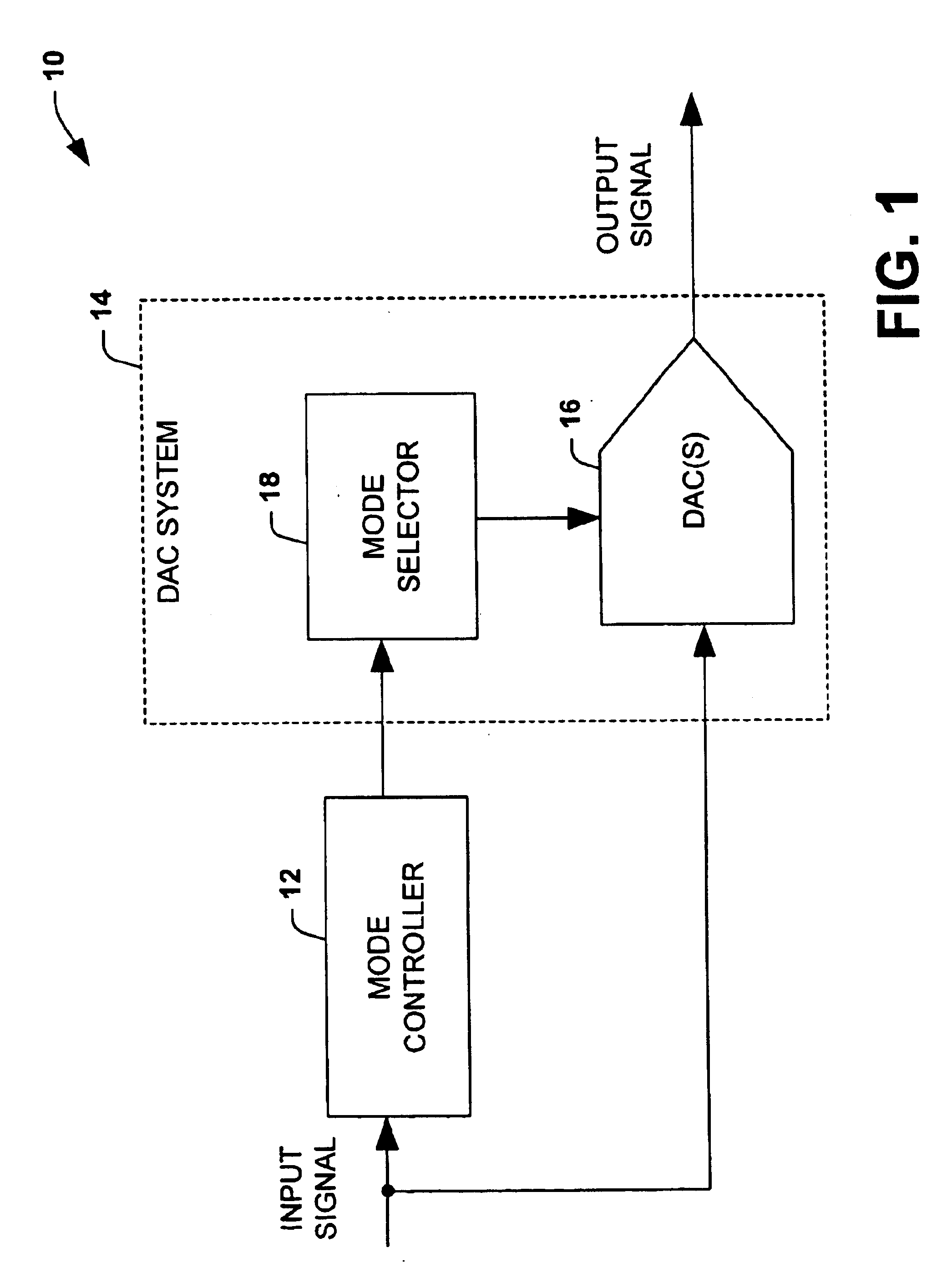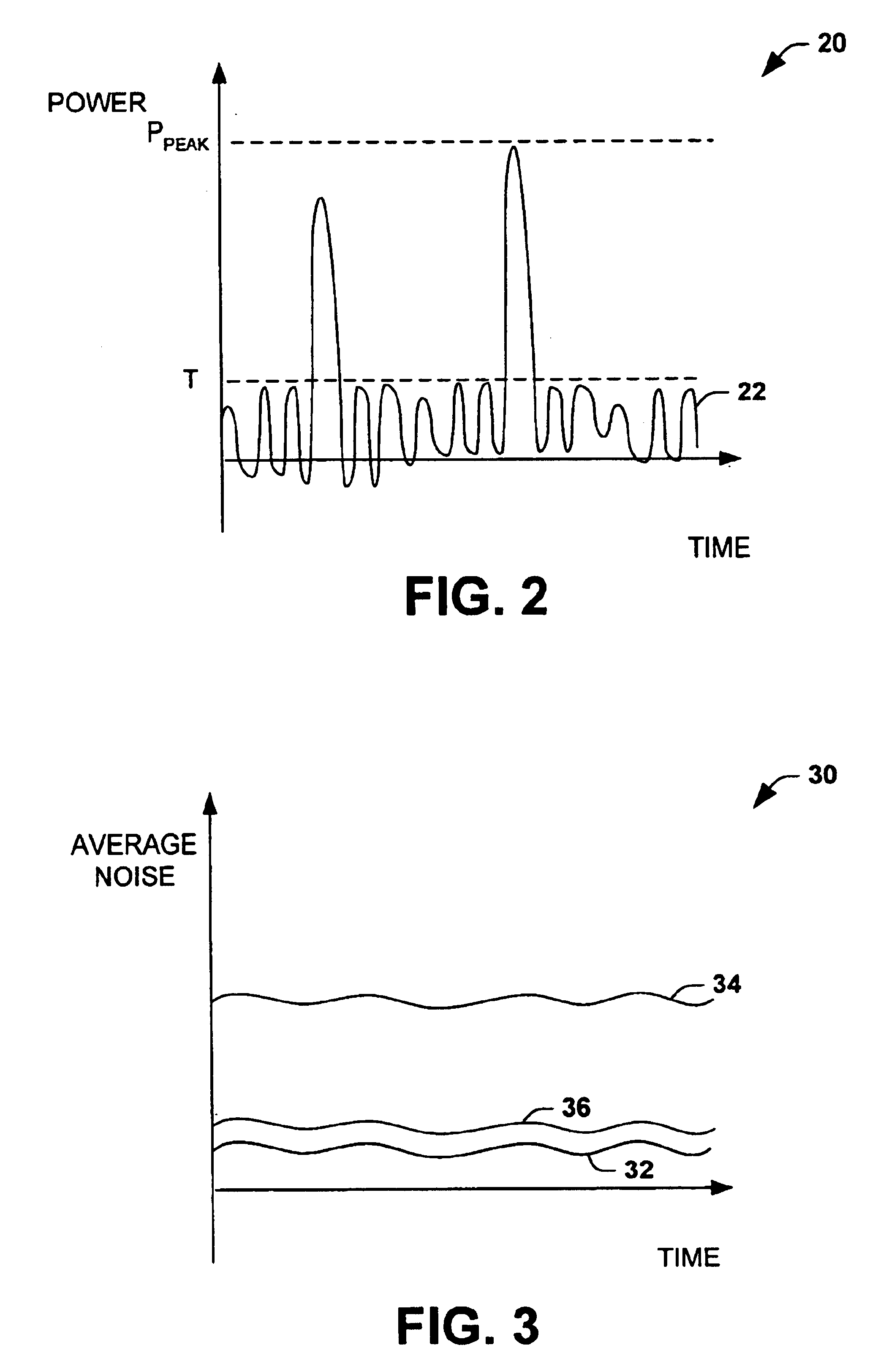Extended range digital-to-analog conversion
a digital-to-analog conversion and extended range technology, applied in digital-to-analog convertors, physical parameters compensation/prevention, instruments, etc., can solve the problems of time-varying envelopes, increased out-of-band emissions, and errors in wanted signals, and achieve the effect of reducing the quantization noise produced in the conversion
- Summary
- Abstract
- Description
- Claims
- Application Information
AI Technical Summary
Benefits of technology
Problems solved by technology
Method used
Image
Examples
Embodiment Construction
The present invention relates to a system for converting a digital signal to an analog signal. The system selects a mode of operation based upon a characteristic, such as amplitude or frequency, of the input signal. Each mode of operation corresponds to an instantaneous dynamic range and corresponding quantization noise level of a digital-to-analog converter system. The ensemble of modes provides an increased dynamic range and / or a reduced quantization noise level compared to a single mode. The input signal can thus be converted at a dynamic range matching its instantaneous characteristics. This flexible dynamic range reduces the average quantization error of the output signal. This is particularly useful in communications application, where excessive quantization error can result in out-of-band emissions and other signal distortion. Thus, the digital-to-analog conversion system of the present invention is well-suited for use within transmitters, including mobile transmitters as wel...
PUM
 Login to View More
Login to View More Abstract
Description
Claims
Application Information
 Login to View More
Login to View More - R&D
- Intellectual Property
- Life Sciences
- Materials
- Tech Scout
- Unparalleled Data Quality
- Higher Quality Content
- 60% Fewer Hallucinations
Browse by: Latest US Patents, China's latest patents, Technical Efficacy Thesaurus, Application Domain, Technology Topic, Popular Technical Reports.
© 2025 PatSnap. All rights reserved.Legal|Privacy policy|Modern Slavery Act Transparency Statement|Sitemap|About US| Contact US: help@patsnap.com



